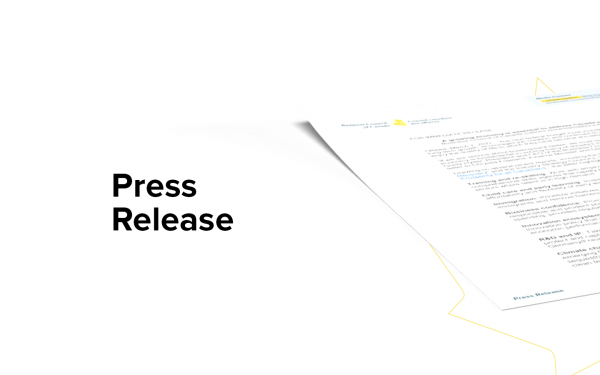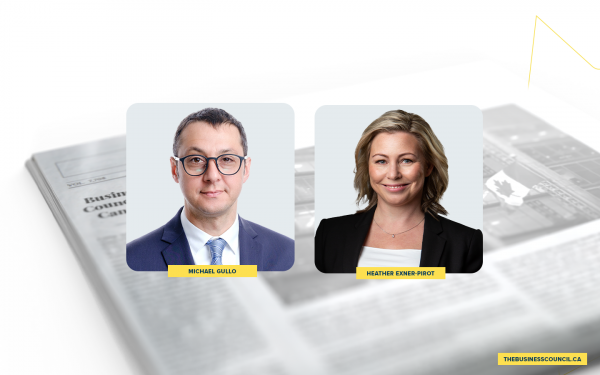Enbridge Annual General Meeting
“There’s no reason that we shouldn’t be able to pursue energy exports and global emission reduction at the same time. Yet, we are squandering this opportunity, there’s no doubt about that, while our largest trading partner across the border capitalizes on the same advantages that I just took you through. Right now they are aggressively executing an industrial and export strategy driven by their energy advantage. Canadians, I think, have been pretty patient through the peace year, but it’s time to get our act together, frankly, to seize the energy advantage that we have.”
Al Monaco
Al Monaco: Thank you, Greg. I think the Chairman addressed the one question related to executive compensation. I would also like to make a remark on that, but I’ll probably hold that here until I conclude on my opening statement here.
So thank you, everyone, for joining us today. I think, as you all heard, 2018 was a very busy but a very productive one at Enbridge. So I’ll highlight our results in a few minutes, but the broader theme today will be on something that’s equally important to our shareholders, which is how we’re building the leading energy infrastructure company in North America and positioning for the future.
And while we’re North American in scope now, after the large deal that we did a couple of years ago, at the end, I’m going to touch on specifically why – what Canada can do to capitalize on its energy advantage.
For context, I’m going to begin with the global energy picture and what’s changed in that, which has been quite dramatic. Until recently, the world’s focus was on supply and energy security. Then technology unleashed mass resources where lowest costs, quickto-market supply pushes out higher cost energy.
So today, energy is shaped less by supply and scarcity and more by consumption and end use. Consumers are now in the game focused on the type of energy they want, when they wanted and how much they are going to pay for it.
Consumers are telling us very clearly that they want more affordable, more reliable and lower emissions energy. And today, there is a pretty broad consensus that our climate is warming and that it makes sense to reduce our energy intensity. What’s been true for generations though is that energy is going to continue to improve quality of life.
And the fact is that it’s lifted billions from poverty over the decades. Energy is essential in terms of our fabric, in this society, yet there is a conundrum. Even as we shift to better energy efficiency, the world, all of us, is demanding more and more of it. By 2040, we’ll see a 25% increase in energy demand.
And now this is not just the energy industry view, it’s broadly shared by everyone. And why is that? Well, the global population is going to increase from 7.6 to 9 billion people by 2040. 64% of the people are going to live in urban areas, up from 55% today. That is going to take a lot more energy.
And the middle class will grow by 2 billion. So if we believe in population growth, more urbanization and people’s desire to improve the standard of living, then global consumption is going up. No doubt renewables is going to play a much bigger role in balancing the equation, but heavy lifting will still be required from traditional energy.
The fact is, we’re going to need all sources of energy to meet demand while reducing energy intensity. What this global picture tells us though, is that North America is in prime position to play the leading role in meeting the world’s energy means. Why? Because we have unparalleled low-cost resources that we developed sustainably.
And with that capability, there’s a huge opportunity in North America to become the expert juggernaut and increase global market share. And as you’ll see, our company is very well positioned for that opportunity. So you notice with the cupcakes at the back, 2019 is Enbridge’s 70th birthday.
Over 7 decades, we’ve adapted by understanding the energy fundamentals, at what you’re pointing us to and our customers’ needs. It began with a single line that you see here on the map that connected Canadian production to the U.S. Midwest in 1951. Hard to believe that this 1,800-kilometer line was built in just 150 days. I think today, it would take 3 years before we even lifted a shovel.
We then added multiple lines, and today, we move 25% of all North American crude. We then embarked on a regional buildout upstream, and we’re now the largest player in Alberta. Another strategic move was connecting Western Canadian production to the biggest refining complex in the world for the first time, the U.S. Gulf Coast.
So through this period of tremendous growth, we kept an eye on the strengthening fundamentals of natural gas. We moved hard on that view by acquiring what is now Enbridge Gas in Ontario. That anchor positioned us to build the new gas transmission business to the U.S. Midwest and Eastern Canada and then to the offshore Gulf Coast.
As it became even clear that natural gas would be a key to the future energy mix, that chart I showed you earlier on supply, we took a very big step in acquiring the premier U.S. gas infrastructure franchise when that rivaled the strength of our liquids business.
Of course, that’s Spectrum. And today, we move about 20% of all U.S. natural gas. That deal came with Union Gas.
Large utility, we sat right next door to ours in Ontario, and we’re now the largest gas utility in North America by volume. While that’s happening, another trend is emerging, renewable energy.
Over the last 15 years, we’ve built a solid position in wind and solar, and we parlayed that recently into offshore wind in Europe. So when you step back from the map here, it’s very clear, we’ve evolved, adapted and capitalized on the emerging trends.
And if you love infrastructure like we do, this is a beautiful picture. But the power of these assets is that they come with scale and reach to provide our customers with low costs, reliable transportation to the best markets. The footprint gives us great optionality to grow and capitalize on whatever trends emerge, even the ones we don’t see today.
It gives us great opportunity to capitalize in the global export opportunity that I mentioned. And most important, it’s impossible to replicate this asset base. These assets are going to be needed for decades because they serve a critical need and make a positive impact on everyday life.
So as you can see, we benefited tremendously from the growth since 1951, but the job now, for us, as a management team and board, is to sustain that growth for the next 70 years and building a company for the future and delivering the energy people want and need.
And here’s how we’re thinking about that. Our #1 priority has always been safety and environmental protection, but it will even be more important in the future. That’s because communities, customers, the general public, regulators, they all expect more. They expect us to be world-class, and that’s what we expect of ourselves.
I’m very proud of this teams progress on this, but we still have incidents, unacceptable incidents, which push us to get better. The future also means building relationships with communities over the entire life cycle of our assets, not just when we want to build something.
That’s the key in our view to building trust, and trust is a big factor in how we engage indigenous communities today. And we’ve learned, frankly, a lot over the last decade or 2 about that. Our people on the ground work on having a very solid understanding of indigenous connection to water and land, their governance, their culture and their traditions.
And it’s also critical at the same time, though, to have economic partnerships. And we’re very proud of this example, on line 3, where we created $400 million of opportunity for indigenous communities. And at peak construction, we were working with 150 indigenous companies and 1,000 people were working on the project, that’s 20% of the total workforce.
And there’s another bevy of opportunities in Minnesota for tribal nations there. We’re not done learning and preparing for the future on this important issue. Last year, at this meeting, I talked about our report on indigenous rights and relationships, and we had that for everybody to see and the goal was to get input on how to get even better in this area.
Preparing for the future also means transitioning to a lower carbon economy. Now Enbridge, of course, is not a major emitter, but we are minimizing our impacts and here’s how. Our asset base now reflects the global energy supply mix with much more natural gas. What people are finally getting is that natural gas can dramatically reduce emissions.
Case in point, since 1992, the U.S. economy, grew by 80%, while emissions dropped below 1992 levels because of natural gas field electricity. Another example, littleknown, 1 Canadian LNG facility powered by hydro could displace many coal-fired plants in Asia. That’s how we need to start thinking about our country’s own energy capability to reduce global emissions.
Now you see here, on the right, is a picture of our first offshore wind project, the Rampion project, in the English Channel. It has capacity to power 350,000 homes. This is a 400-megawatt plant with 0 emissions. Since 1995, our energy efficiency programs at our utilities reduce consumption equivalent to taking 9 million cars off the road.
Now part of the energy transition is explaining our approach and being transparent about what we’re doing, and I’m pleased to say that this year, we’re going to be releasing our first standalone climate report that will happen in July. And this is not a resolution that’s come forward from our shareholders, but we do believe it’s part of the future and something that we need to do and want to do.
Technology is also a critical part of the future, and this is an exciting opportunity. You hear the bells and whistles about technology, but really, it comes down for us to improving performance, our competitive position and our customer interactions. We’ve been at the forefront of using technology in our operations, but the future is really about data management in large quantities and predictive analytics.
For example, the biggest cost in our business across the enterprise is power. Even small changes in power by using more data management and predictive analytics can help to reduce costs but also reduce emissions.
Predictive analytics are being used in the maintenance and planning of our renewables business. It is giving us more time up and more electricity production. What you see here is the launch of our technology lab in Houston, and we previously had open 1 up in Calgary, where we bring people together to create technology solutions to business challenges. So again, very exciting opportunity for our company.
The future also means continuing to grow. We’ve got $16 billion of projects right now. We’re executing on and lots more under development, as you can see, with the arrows there that show that. We think these opportunities will drive about $5 billion to $6 billion of new investment annually, which would translate to very solid growth post 2020.
But the key, especially in this environment today is you have to be disciplined, and we’ll focus on the assets and continuing to invest in areas where we advance our strategy, had good returns, while managing our balance sheet.
Building for the future also means investing in our people. We want our people to have long, challenging and rewarding careers at Enbridge. We’re building skills and career paths to improve digital literacy and rotation programs. We’re focused on diversity and inclusion of our workforce, that part always has been of our values, but it’s also powerful advantage because diversity will help us better understand customers and anticipate emerging trends.
So moving to the results, after we closed the Spectra acquisition, we set a 3-year plan. So I’d like to take you through this scorecard. Operationally, our systems were tested with extreme weather and they ran very well. We’re proud of that. Safety wise, strong results on many fronts, but that was overshadowed by 3 incidents that we had at the end of last year. So we’re giving this one as you can see, a half checkmark and we’ve redoubled, of course, our efforts to review our safety programs so this doesn’t happen, again.
Financially, we drove record results. Adjusted EBITDA went up by $2.5 billion to almost $13 billion. Distributable cash per share grew by 20% to $4.42]. Earnings per share increased by 35% to $2.65, and we increased the dividend by 10%. We brought $7 billion of projects into service, which will generate good cash flow going forward.
Now our line 3 project. This is the largest project in our history at $9 billion. We’ve now laid the entire 1,100 kilometers of pipe in Canada, and that segment will be ready by the end of this month. In Minnesota, I’m sure, you’ve heard about the process there, the PUC approved the project last year, including the need and the route, which was a very big accomplishment by the team.
Now Minnesota has given us a time line that would allow us to complete the permitting by year-end. That’s later than we thought and expected, which means our in-service date for the line will now be pushed from this year to the second half of next.
Another big goal was to transition to, what we call, a pure pipeline utility business. We got there in one sell-through by selling almost $8 billion of assets that didn’t fit that category. We exceeded the target and schedule we set for the further strengthening of our balance sheet, and that allowed us to move to a self-funding model and to eliminate the dividend reinvestment program, a very positive step.
I know that many of you use that program in the past, but as I said, something that I think will benefit us. Another priority was to streamline our structure. That was a tall order actually. We acquired the public interest of all 4 sponsored vehicles, which really consolidated all of the assets that we love in the first place under one roof.
And of course, we combined our 2 Ontario utilities. On growth, we sanctioned $2 billion of new capital projects that support our near term and post 2020 outlook. These strong results and our outlook for the future translated into another 10% growth in the dividend for 2019. That extends the track record to 24 consecutive increases, and we are proud of that record.
So we are pleased with the year in so many ways. And I think if you really bottom line it, Enbridge is in a much stronger position today than it was a year ago when we spoke to you. But all of those achievements did not translate to share price. 2018 was a tough year for Canadian and U.S. energy markets, particularly for energy and interest rate sensitive sectors like ours.
That being said, we believe the value proposition that we are offering, which combines the best assets, low-risk business model and reliable growth is going to deliver great returns for shareholders going forward, and we’ve already seen some of that uptick since the beginning of the year.
Before I conclude, I’d like to speak to what I believe is an inflection point for the Canadian energy space. So the topic of the day is whether we can build pipelines in this country, this one or that one; and believe me, our people feel a lot of frustration over that daily. But let’s look at the big picture here, just for one moment.
And I’ll do that by talking about 4 advantages that we have: number one, we are one of the world’s largest oil and gas producers. The Duvernay and Montney have some of the lowest cost natural gas and NGL resources in the world. The cost of bringing on new production in the oil sands has dropped dramatically as have operating costs.
The industry has done a great job on that front. Two, Canada’s responsible approach to development and transportation is a global differentiator in my view. Our regulatory systems ensure environmental protection, oil sands emissions dropped 14% since 2014 and are in a pace to fall by another 20% in intensity by 2030.
And while there’s more work to do, Canadian energy companies lead when it comes to indigenous engagement. Three, growing global energy demand gives us a huge opportunity to gain energy market share through greater exports. We’re approximate to growing global markets LNG from Canada’s West Coast is literally 10 days sailing to Tokyo or Shanghai. Four, the social and economic benefits are undeniable. Average annual government revenue from energy is about $18 billion that goes to health care and education. In 2017, Canada’s energy sector supported almost 1 million jobs across this country. That kind of economic activity helps incubate new technologies and provides highly skilled jobs.
Let’s not forget, low-cost energy helps underwrite industries across this country, including the manufacturing sector. The point of all of that is that this country has a very compelling energy story. And there’s no reason that we shouldn’t be able to pursue energy exports and global emission reduction at the same time.
Yet, we are squandering this opportunity, there’s no doubt about that, while our largest trading partner across the border capitalizes on the same advantages that I just took you through. Right now they are aggressively executing an industrial and export strategy driven by their energy advantage. Canadians, I think, have been pretty patient through the peace year, but it’s time to get our act together, frankly, to seize the energy advantage that we have.
And to do that, I think we need to have fewer roundtables and discussions and a clear objective to create a national energy strategy, one that takes into account our competitive advantages; reconciles environmental, social and economic goals that we can invest with confidence; and one that transcends changes in government. So the time is here to demonstrate that Canada can advance its economic interest, while respecting the environment and indigenous rights.
So to close, I and the management team want to thank the Board for their guidance and strong governance through the last year, and again, special thanks to Clarence. And it’s a great example of somebody that’s devoting a tremendous amount of time going forward to giving back to the community. Again, on behalf of management, the loss of Michael Phelps certainly means a big loss to the energy business and to Enbridge and a great voice for our industry. Again, welcome to Teresa and Susan who couldn’t be here today.
To wrap up then, it’s clear, Enbridge is a very different company than what you see in the picture here, 70 years ago, or even a decade ago. Today, we are a leading North American company but with global scale. We have tremendous assets and excellent opportunities to grow. A final thought, and I think this visual here says it very well, and frankly, it’s one of the best visuals I’ve seen for a long time.
We accomplished a heck of a lot last year, and that’s entirely due to our great team of people from across this company, including these green shirted employees and supporters of Line 3. We know them day-to-day as keeping our systems safe and delivering energy that people want and need, but they have evolved into a strong force, advocating for what we do well and the communities that they work in and the most powerful people speaking on behalf of our industry are our own people who work in those communities.
My thanks and utmost respect goes out to our people, who work at Enbridge and the thousands of others who support our business. I thank you for listening, and I will now welcome your questions.
As I said, I would like to make a comment about the – I guess it was a question, but was more of a comment around compensation.
Let me just first say that we very well understand that the team, the management team, is well compensated. And it’s on us to deliver value, and believe me, we’re very focused on some of the comments that were made around returns.
The real objectives of the compensation program at the company is: number one, to pay for performance. And yes, we can look at the short-term return, but the reality is, we also want to pay for operating metrics, making sure that we achieve our safety targets, and of course, financial metrics in the short term.
We do target medium pay with our peers, but I think one of the biggest factors is in my case, and also for the rest of the management team close to 90% of the pay that you’re referring to there is entirely aligned to achieving performance. There is an independent process that goes on to assess compensation, and I would like to point you to the independent work that was done by ISS, which basically concluded that the pay package was in alignment.
Finally, on this point, I think over the last 2 to 3 years, myself and I know some of the other management as well have basically, recycled our entire salary into stock. And I can share you, as we watch share performance over the last 2 to 3 years, we, as management team, are entirely, entirely aligned with our shareholders in that regard.
So with that comment, I would like to open it up to others who have questions or comments.








